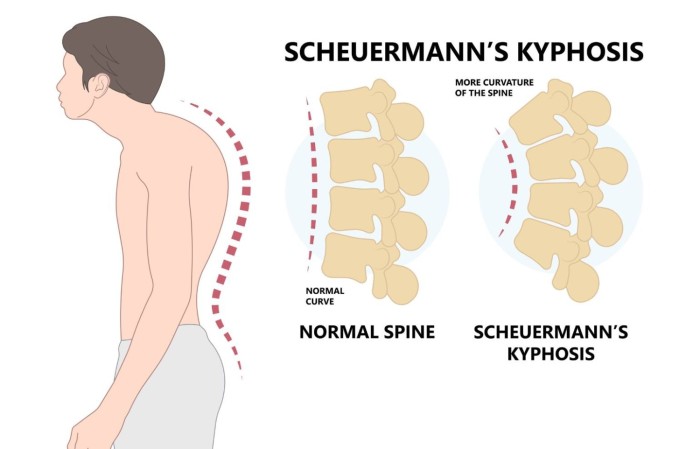What is Scheuermann's disease?
Scheuermann’s disease, also known as Scheuermann’s kyphosis, is a condition where a child’s spine has too much of a curve. This typically happens during periods of accelerated growth or puberty. For girls, this can occur between the ages of 8 and 13. For boys, it can be from ages 10 to 15.
Both the front and the back of the spine need to grow at the same speed. If the front of the spine doesn’t grow at the same rate as the back of the spine, the vertebrae becomes wedge-shaped. This causes the middle of the spine to curve forward, which results in a rounded or stooped posture.
We currently do not know the cause of Scheuermann’s disease, but it does appear to run in families. Some patients develop scoliosis as a result. Common symptoms include fatigue, back pain, loss of flexibility and slouching. In the most severe cases, it can affect a child’s breathing and spinal cord. It also puts a child at a higher risk for arthritis down the road.
How is Scheuermann's kyphosis diagnosed?
The signs of Scheuermann's kyphosis may be noticed by the person with the disorder, their caregivers, or school staff during routine scoliosis screenings.
After making an appointment with your healthcare provider, they will perform a number of tests. During the physical exam, your child will be asked to perform the “Adam’s forward bend test.” They will bend forward with their feet together, knees straight and arms hanging freely. It helps your child’s provider analyze the spine. An x-ray may also be needed to see just how curved the spine already is.
The good news is that after a diagnosis, kyphosis treatment options are available. Gillette Children’s is comprised of a world-renowned team who are pioneers in their field. Working together, we do everything we can to ease pain and address concerns.
How is Scheuermann's disease treated?
Physical therapy is one of the best ways to strengthen muscles and improve flexibility in patients with Scheuermann's kyphosis. As a result, this can help manage pain. Used in tandem with other methods such as nonsteroidal anti-inflammatory medicines, children have reported improvement when sitting, standing and participating in activities.
In some cases, bracing may also be useful. Depending on the specifics of your child’s diagnosis, they may be required to wear a brace made specifically for their body for a certain number of hours during the day or overnight. Physical therapy is a crucial part of the bracing process. Exercise will maximize the effect the brace has on the body, as well as strengthen the muscles.
While it is rarely done, surgery is another option. In cases where the pain is too severe or the curve of the spine is putting pressure on the spinal cord, however, it might be necessary. Some families also have requested surgery because their child is suffering from emotional distress due to their hunched-over appearance. Posterior fusion and combined fusion are the two common procedures used to treat kyphosis.
After surgery, healthcare providers once again recommend rest and physical therapy. One of Gillette’s physical therapists will help your child start moving and learn how to do everyday activities without putting extra strain on their back. Core stability exercises and gentle back range of motion movements are most beneficial.
 Home Page
Home Page

